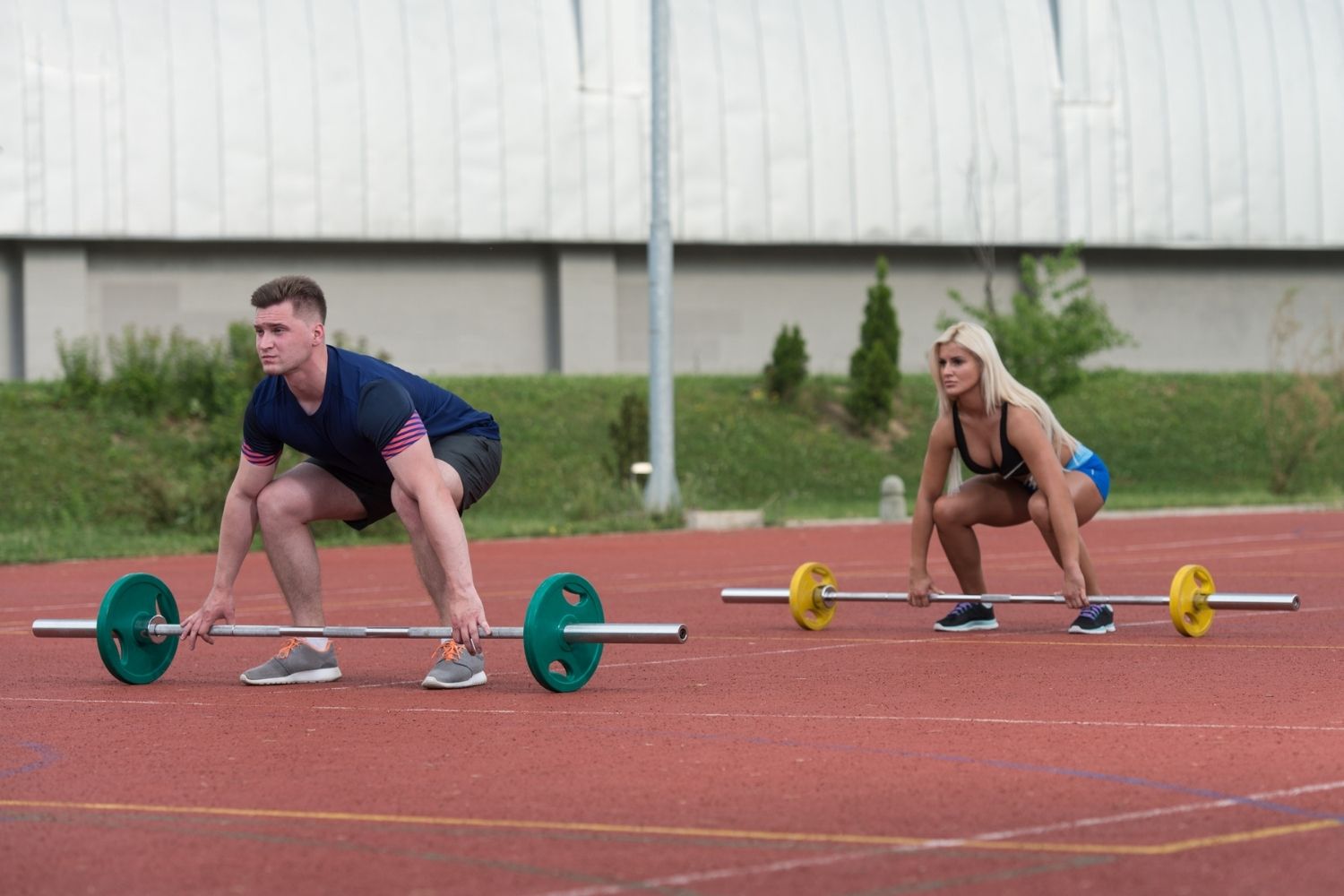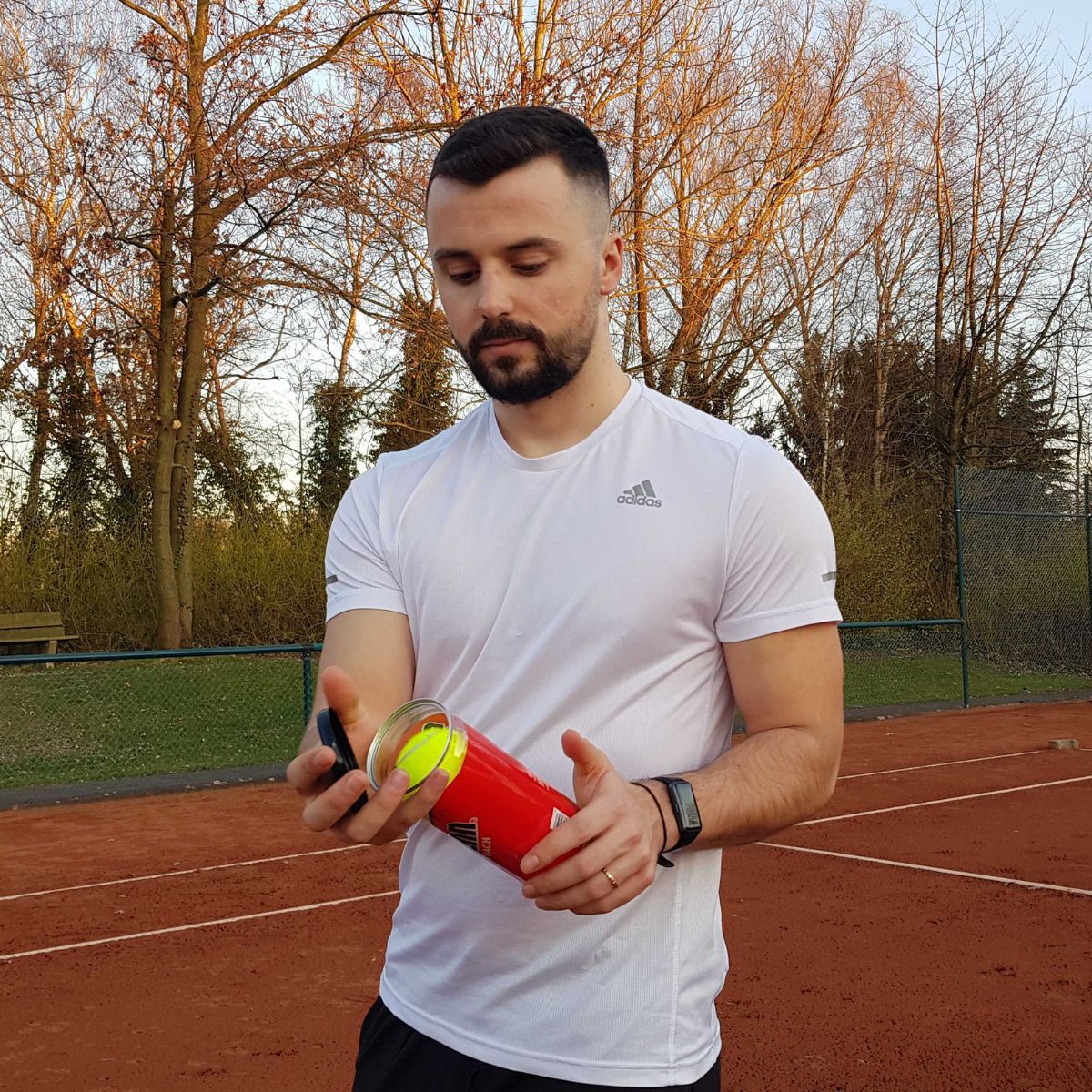Do you want to hit harder and serve faster? If so, you need to start strength training for tennis players. Many tennis players neglect this important part of their game, and it shows in their performance. Strength training can help you build power and endurance, which will help you win more games.
In this article, we will discuss the benefits of each strength training exercise for tennis players, as well as a weightlifting program that you can use to improve your performance on the court!
Bench Press
Bench Pressing is a tennis strength training exercise that tennis players can use to improve their game.
The benefits of bench pressing are many. First, it helps you build upper body strength. This is important for tennis players because the majority of the game is played with your arms.
Bench pressing also helps to improve your core stability. A strong core will help you maintain balance while moving around the court and swinging your racket. Finally, this exercise also increases your range of motion, which can help you reach those difficult shots!
There are serval exercises to do on a bench press. In order to get the most out of your tennis strength training, you should focus on exercises that target the muscles used in tennis. These muscle groups include the shoulders, chest, and triceps.
How to Perform Barbell Incline Bench Press
- Lie flat on an incline bench with the barbell resting on the rack.
- Push the barbell off the rack and over your chest, hands in an overhand grip, just over shoulder-width apart.
- Lower the barbell so that your palms are in line with your chest and elbows at a 45-degree angle.
- Press the barbell back up until your arms are fully extended. Return to your chest and repeat.
Sets: 4
Reps: 10
Primary muscles used: Chest
Secondary muscles used: Triceps
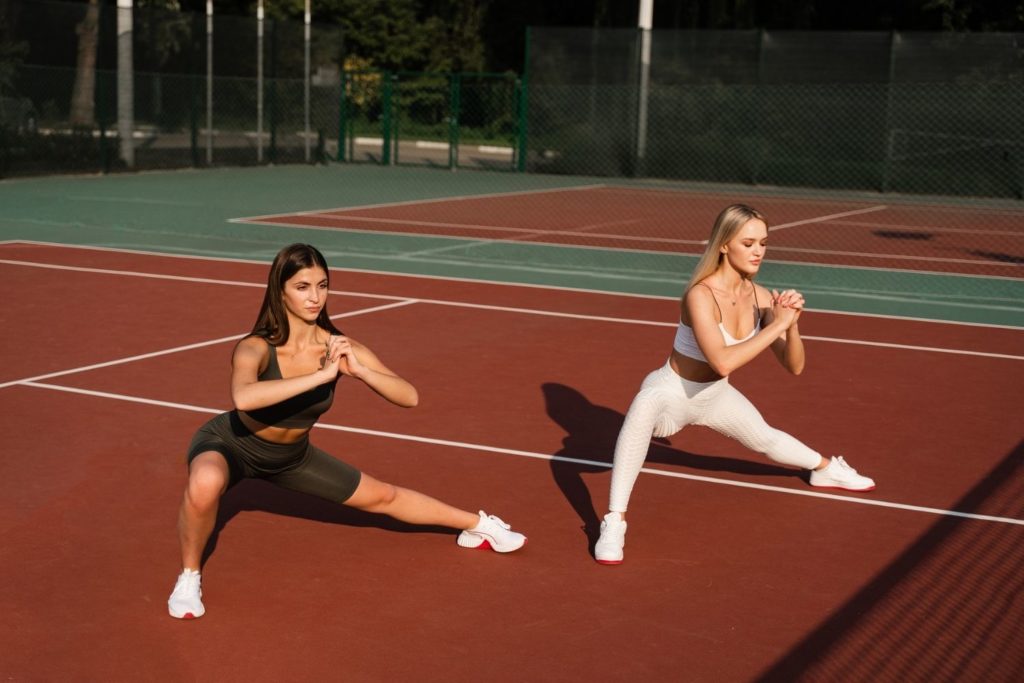
Lateral Lunge
The lateral lunge is the best exercise for tennis players that target your lower body muscles, specifically your glutes and abductors. These are the muscles that help you move side to side on the court. Strong glutes and abductors will help you generate power when making those quick changes of direction. They will also help improve your balance, which is important for tennis players who need to be light on their feet!
How to Perform Lateral Lunge
- Start by standing in a wide sumo squat stance.
- Bending one knee at a time. Put all your body weight on the bent leg whilst stretching the opposite leg.
- Keep your chest upright, back straight, and core engaged at all times. Swiftly move on to the opposite leg and repeat the process.
Sets: 3
Reps: 20
Primary muscles used: Glutes, abductors
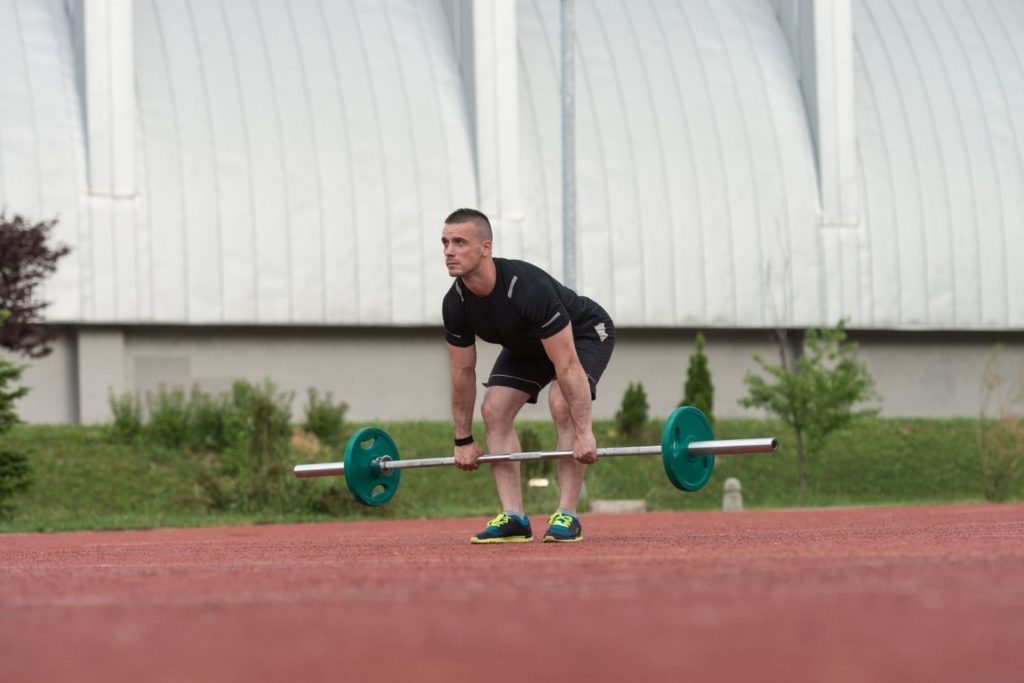
Deadlift
The deadlift is strength training for tennis players, which helps them improve their game. The benefits of the deadlift are many. First, it helps you build lower body strength. This is important for tennis players because the majority of the game is played with your legs.
Deadlifting also helps to improve your grip strength. A strong grip will help you hold on to your tennis racket during those long rallies! Finally, this exercise also increases your range of motion, which can help you reach those difficult shots!
Barbell Sumo Deadlift is the best way to go for tennis players.
How to Perform Barbell Sumo Deadlift
- Stand with your feet over hip distance apart in a sumo stance, feet at a 45-degree angle, and a barbell on the ground just in front of your feet.
- Hinge at your hips, keeping a flat back, and engage your core; grab the barbell with an overhand grip in both hands.
- Keep your arms extended, extend your hips forward, push through your heels and straighten your knees to lift the bar off the floor.
- At the top of the movement, keep squeezing your glutes to keep your hips pushed forward.
- Slowly reverse the motion keeping your back straight and core engaged, and return to the starting position. Repeat.
Sets: 4
Reps: 10,10,8,8 (Drop set)
Primary muscles used: Quads, glutes
Secondary muscles used: Glutes, hamstrings
Squats
Squats are another gym workout for tennis players that can help improve your game. This exercise works all of the major muscles in your legs, including your quads, hamstrings, and glutes. Strong legs are important for tennis players because they provide stability and power when moving around the court. They also help you generate speed when hitting those big serves!
Start by doing unloaded barbell squats, and then move on to adding weight when you can do 20 reps with ease. Unloaded sets are important in preparing the body for weight sets by engaging the required muscles and reducing the risk of injury.
How to Perform Unloaded Barbell Squat
- Rest the unloaded barbell across the top of your traps (just behind your shoulders) with your legs hip-width apart and core engaged.
- Lower your body into a squat position by hinging at the hips, keeping your knees in line with your shoulders and chest up.
- Aim to squat down so that your knees are parallel with your hips or to your full range of motion without your chest dropping forwards.
- When coming back up, drive through your heels and contract your glutes slightly at the top. Repeat.
Sets: 4
Reps: 12
Primary muscles used: Quads, hamstrings
Secondary muscles used: Glutes
Leg Extension
This workout can only be performed at the gym as it requires Leg Extension machines. This tennis strength training exercise target your quadriceps. These are the muscles on the front of your thighs that help you extend your legs. Strong quads are important for tennis players because they provide power when making those big serves and lunges around the court!
How to Perform Leg Extension
- Firstly adjust the footpad so that it falls on top of your lower leg (just above your feet). Make sure that your legs form a 90-degree angle as you sit on the machine.
- Using your quadriceps, extend your legs to the maximum as you exhale. Ensure that the rest of the body remains stationary on the seat.
- Slowly lower the weight back to the original position as you inhale, ensuring that you do not go past the 90-degree angle limit.
Sets: 4
Reps: 10
Primary muscles used: Quads
EXTRA Intense HIIT Exercise: Jumping Lunges
Jumping lunges are tennis workouts that work all of the muscles in your lower body. This includes your quads, hamstrings, glutes, and calves. Jumping lunges are an intense HIIT exercise that will help improve your cardiovascular fitness and power. They are also a great exercise to do if you are short on time!
How to Perform Jumping Lunges
- To begin, start standing tall with your feet staggered, your left foot slightly in front of your right.
- With your core engaged, push off the bottom of both feet into a jump, switching the position of your feet midair, landing in a basic lunge position with your right leg in front and on the ball of your left foot behind you. Continue to alternate with each jump.
Sets: 5
Reps: 20
Primary muscles used: Quads
Secondary muscles used: Glutes, hamstrings
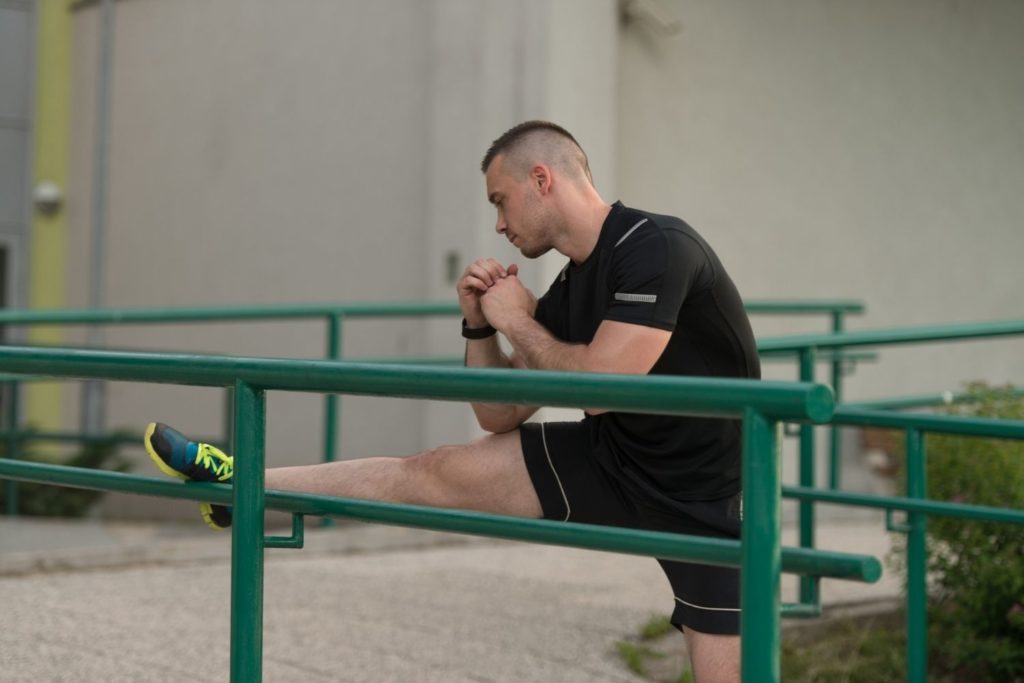
Stretching After Your Workout
As learned in my training school, stretching does a variety of things, including lengthening muscle fibers and increasing blood flow and joint range of motion. It can also help improve posture, prevent injuries and reduce stress.
If you don’t stretch, you might be putting yourself at risk for a number of different injuries. Without stretching, your muscles can become tight, and your range of motion can be decreased. This can lead to strains and sprains, which can be extremely painful. In some cases, not stretching can also lead to joint damage. Over time, all of this can result in chronic pain. So clearly, it’s important to make sure that you’re taking the time to stretch after every tennis workout!
I will break down for you the most important leg stretches exercise every tennis player should do after an intense workout.
Quad Stretch
- Stand tall with your feet hip-width apart, pull your abdominals in and relax your shoulders.
- Bend your left leg (right), bringing your heel toward your butt, and grasp your foot with your opposite hand if comfortable.
- You should feel a mild pull gradually spread through the front of your left-led as you push your hips forward. Repeat on the other side.
Set: 1
Rep: 30 seconds for each side
Primary muscles used: Quads
Downward Dog
- Starting in a high plank position and lift the hips up, so your body forms a V-shape
- Keep the back straight and in line with your shoulders to feel a stretch run down your back and lats.
- Aim to press your heels into the floor to feel a stretch run down the back of your legs.
- Hold at the bottom before returning to the starting position.
Set: 1
Rep: 1 minute
Primary muscles used: Hamstrings, calves
Secondary muscles used: Shoulders, lower back
Rotated Low lunge Stretch
- Start in a lunge position and bring the back knee to the floor.
- Rotate your upper body towards the front leg (place your hand on the outer thigh of the front leg for extra stretch).
- Repeat on the opposite side.
Set: 1
Rep: 30 seconds for each side
Primary muscles used: Glutes
Secondary muscle used: Lower back
